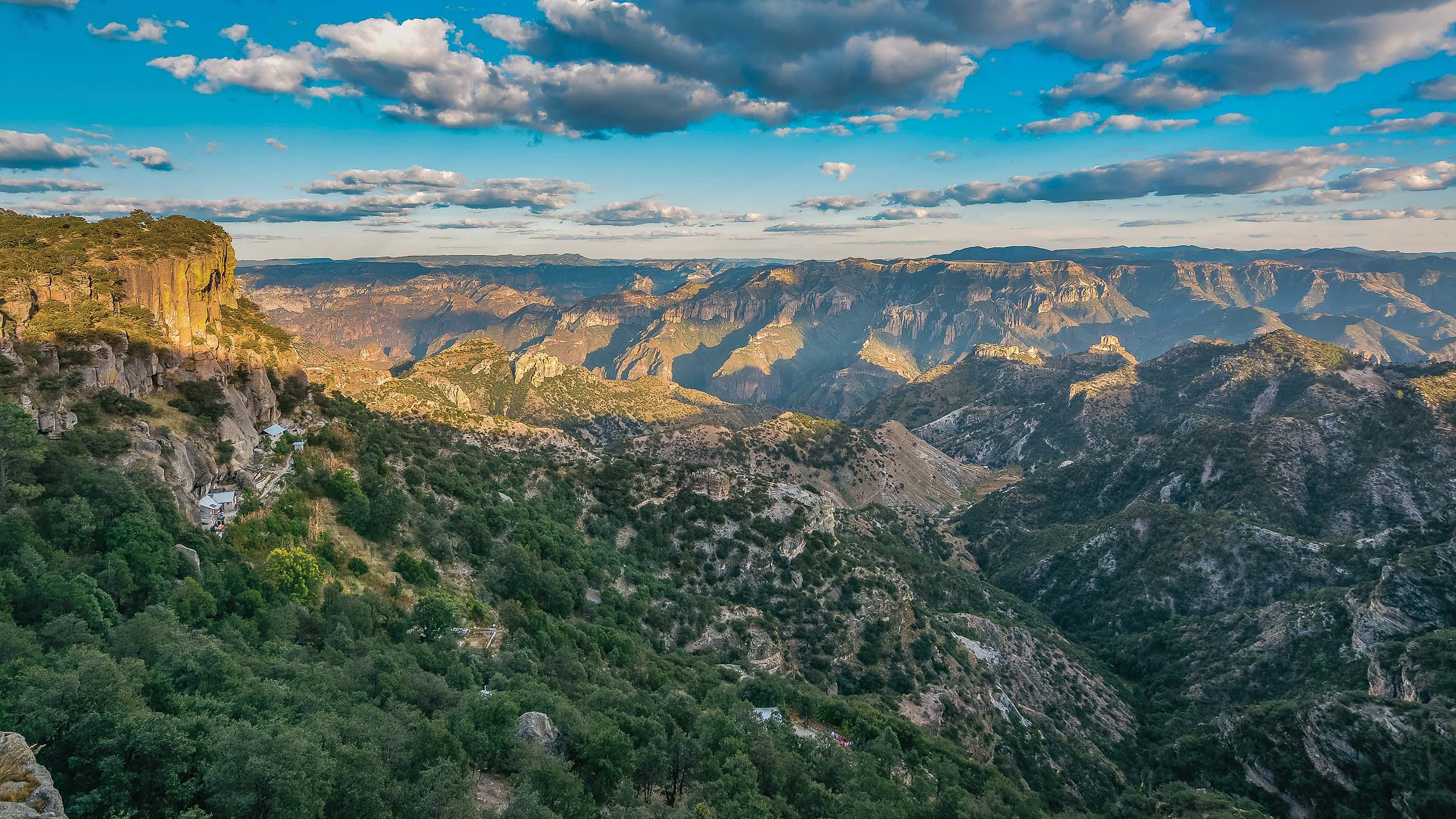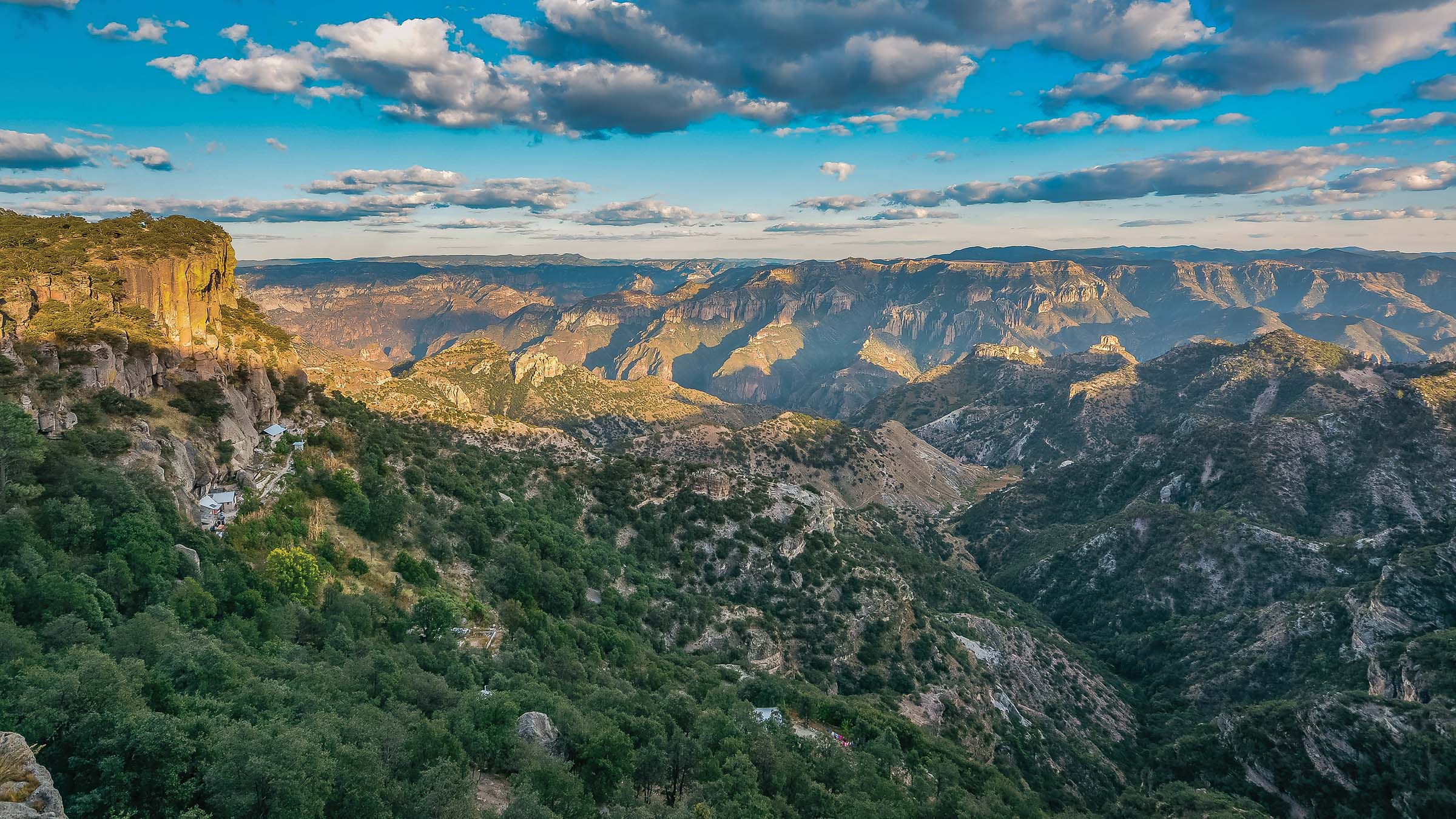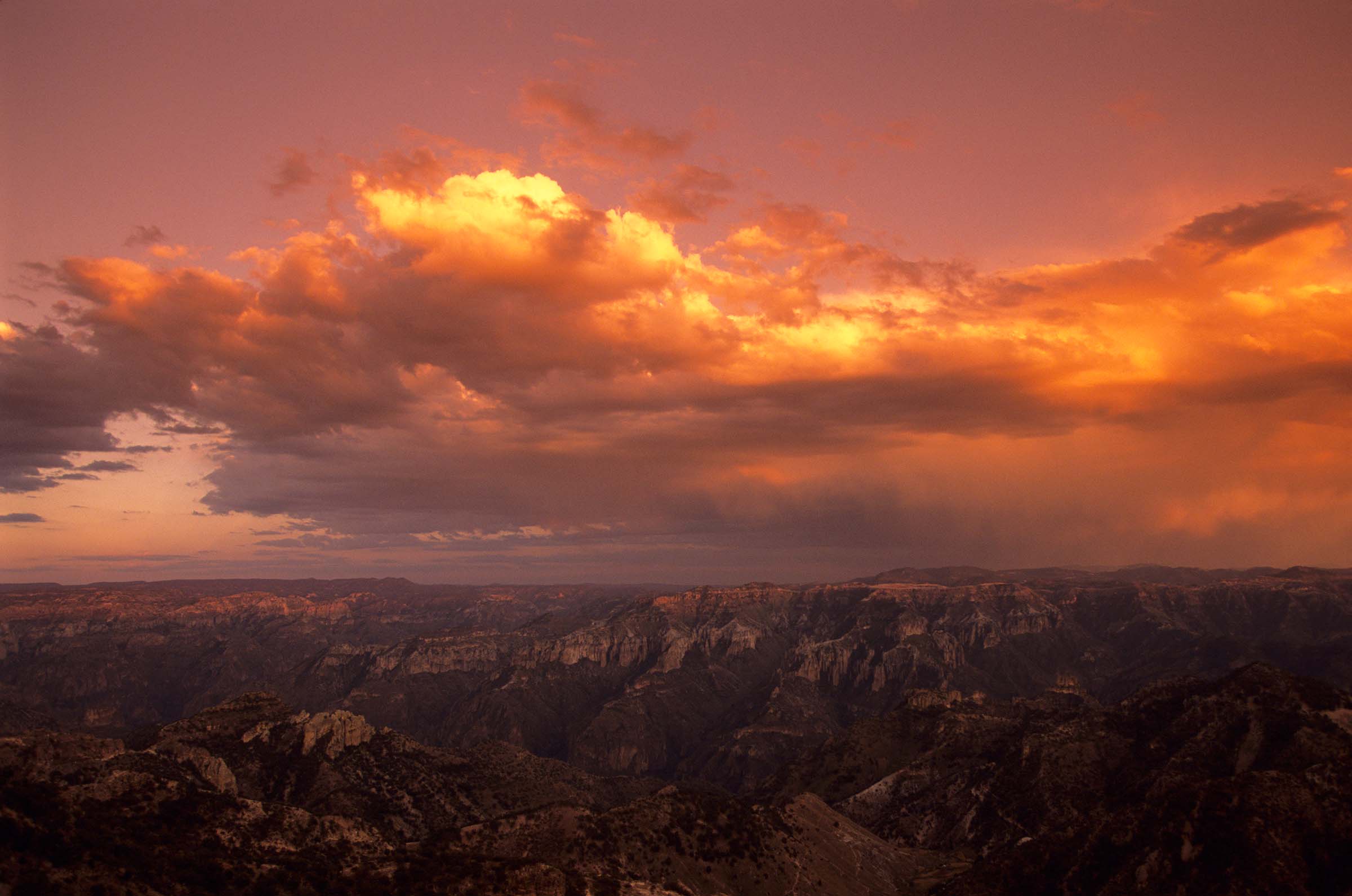On an Epic Trip Through Mexico's Copper Canyon, I Discovered My Limits the Hard Way

(Photo: Jejim / Getty Images)
The carved footholds were barely perceptible, even to my highly motivated eyes. They were more like minor imperfections in the cliff face than something wrought by man. Fortunately, I had become adept at recognizing the subtle handiwork of the Rarámuri, who have been moving through the formidable topography of northern Mexico’s Copper Canyon region for half a millennium. Before committing to what by anyone’s standards would be an inadvisable move, I found myself wondering: Just how did they manage to chisel that diminutive series of steps into sheer rock hundreds of feet above the Rio San Ignacio, which flows through Tararecua Canyon?
Four days before, Jay Scott, a longtime hiking chum, and I had embarked upon what we thought would be a relatively straightforward trek into the depths of some of the most stunning topography in North America. It turned out to be a journey difficult and dangerous enough that it changed me forever.
I first rubbed elbows with Tararecua Canyon, one of the six smaller gorges making up the greater Copper Canyon region, in 1983. My wife and I were on our way to Central America and, on a whim, opted to detour into this area of the Mexican state of Chihuahua, just over 500 miles southwest of Big Bend National Park. We stayed for a few days, mostly relaxing at a place called Recohuata Hot Springs—now a popular tourist destination in a region which has seen a steady rise in hiker and mountain bike traffic since the empty days of my first visit. I was smitten, and decided to return at my earliest opportunity for further exploration. It took me a few decades, but there I finally was.
A mimeographed, hand-drawn tourist map with no scale provided a rough itinerary: Follow Tararecua Canyon down to its confluence with the mighty Rio Urique. Then figure out a way to climb out of one of the deepest abysses on the continent (Tararecua is 4,674 feet deep). After that, drink some cervezas.
“Three days—four, max—of easy hiking,” I told Jay prior to departing. We lollygagged at Recohuata Hot Springs for a day, then strolled a few miles farther downriver, where we found another set of hot springs.
The next day, reality hit. The canyon closed down tight, its floor becoming one boulder field after another, interrupted only by frequent box canyons filled with bone-chilling water. There was no trail. And the farther we went, the deeper and darker Tararecua Canyon became. Though the surrounding terrain showcased world-class beauty, the shadowy cliffs had an ominous vibe. I was beginning to understand why the Rarámuri call it the “Canyon of Bad Dreams.” We wouldn’t be doing any more lollygagging.
Jay and I constructed driftwood rafts several times to float our gear through impassable stretches of the Rio San Ignacio. Each time, we needed to build a fire to warm back up from the frigid water, even though average temperatures were well into the 90s. Progress was painfully slow.

Here would be a good place to point out that neither of us were outdoor neophytes. Jay grew up hiking, building trails, and fighting fires in New Mexico’s rugged Gila Country. I had thru-hiked the Appalachian Trail. But despite our years of experience, we were clearly in over our heads, and we were starting to panic. After several red-faced arguments, we began scouring the horizon for escape routes, to no avail.
Eventually, we came to a particularly challenging box canyon, with deep water backed up several hundred yards. There was no raft-building driftwood to be found. We had a choice of swimming our gear through piece by hypothermic piece, or picking our way up and around on an adjacent canyon wall. We chose the latter option. And that is when we came upon those tenuous footholds, balancing hundreds of feet above the water of the Rio San Ignacio. Given that I had gotten us into this mess, I went first. Jay later said he saw me hesitate halfway across the 50-foot traverse, with one leg starting to shake. He assumed I was going to plummet to my doom.
Time split in two. On one side of the temporal equation, I zipped across in the blink of an eye. On the other side, I slid through every tentative step as though I were moving in slow motion. I looked down and observed nothing between me and a potential splat. I thought of my wife back home in the States. I contemplated what a beautiful day it was. I wondered how badly it would hurt to die in such a way and what the afterlife would be like.
Then I was on the other side, watching Jay follow in my footsteps over the micro-holds, thankfully without mishap. We bushwhacked back down to the canyon bottom to sit and shake for a long while before continuing on a trip that ended up taking a total of seven dawn-to-dusk days of hiking and earned us a minor place in Copper Canyon lore. To the best of anyone’s knowledge, we were the first non-Natives to complete a descent of Tararecua Canyon.

By the time we reached the Rio Urique and our exit point, we were beyond exhausted. Our food supply was nearly gone. Our clothes were ripped to shreds. I had been hobbling along for four days on a boot with a blown-out sole that I successfully field-repaired using a combination of duct tape and extra shoelaces. The repair came with a caveat, though: The boot couldn’t be removed if it was to stay in place—I had to sleep with it on every night.
Though we’d reached the confluence at last, we still had to find a way to the rim, some 5,000-plus feet above. The ascent took 10 zigzagging hours and, in order to catch the final train of the day, we had to sprint a half-mile on our very last legs. When we arrived in the middle of the night at a shabby, cold-water-only hotel in Chihuahua City, we looked like cadavers.
You might think I would have come away from that hike inspired, with a new faith in my abilities: “If I can do that, I can do anything! K2, here I come!” But that’s not what I brought home from Tararecua Canyon. Rather, I came away with the DNA-level acceptance that I was, and would remain, a mid-level adventurer. After this descent, I wouldn’t be pushing the limits any further. The major leagues were not for me.
I didn’t move to Omaha and take up stamp collecting, though. Since my Tararecua trip, I have had many challenging, rewarding, often hare-brained adventures, including hiking hundreds more miles in Copper Canyon. But I’ve never pushed on to the kind of trips that merit news coverage or an invite to join the Explorer’s Club. Dispositionally, I knew after Tararecua that those kinds of trips just aren’t in my nature.
I have tried to suss out what separates the cutting-edge adventurers of the world from us mere mortals. Of course, they are knowledgeable. (If you’re going to climb 8,000-meter peaks, you need to know more than just how to wield an ice axe.) They are physically tough and durable. They have a high pain threshold. They are resolute and focused. They are even-keeled, maybe even unflappable. They are highly motivated. And they must have the logistical acumen to pull off things like skiing across Antarctica or sailing around the world.
Me? Not so much.
From my Tararecua descent I learned that if you can ascertain who you are not, you may very well learn who you are. This does not amount to the death knell of aspiration; rather, it helps to focus it. I recently read that someone is now offering guided trips down Tararecua Canyon. I am tempted to sign up, to see how things might have changed over the years. With the canyon, and with me.
Long-time contributor M. John Fayhee was the editor of Mountain Gazette for 12 years. He lives in New Mexico’s Gila Country.